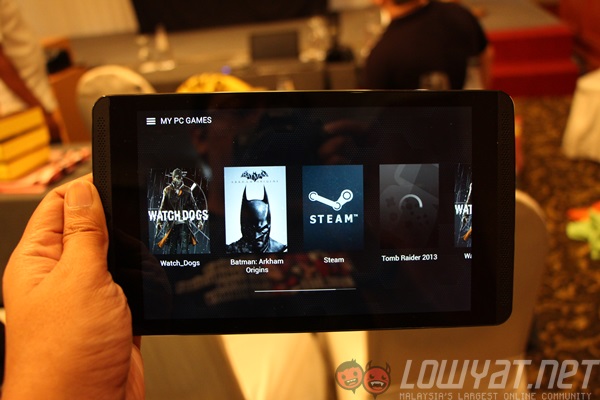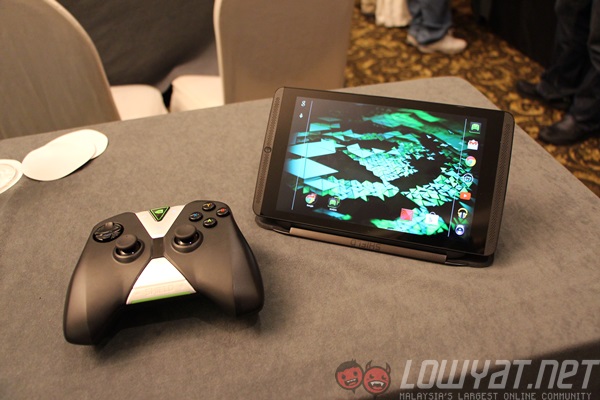
The original NVIDIA Shield was an ambitious step by the company into the handheld console market. It had originally promised remote streaming of PC games, but fell slightly short when the limitations of the feature were made known. This second attempt is something completely different. The NVIDIA Shield Tablet makes people wonder just where this whole thing is going, and if tablets really are the future of mobile gaming. We managed to sit down with the device for a few minutes to find out.
Split between the actual tablet and a game controller, the Shield Tablet presents an interesting conundrum to potential customers. Carrying the tablet portion alone is easy enough as the 8-inch display provides for a form factor that is comfortable and familiar to most. However, to get the most out of the system, one must also bring the full-sized controller along.
Tablet
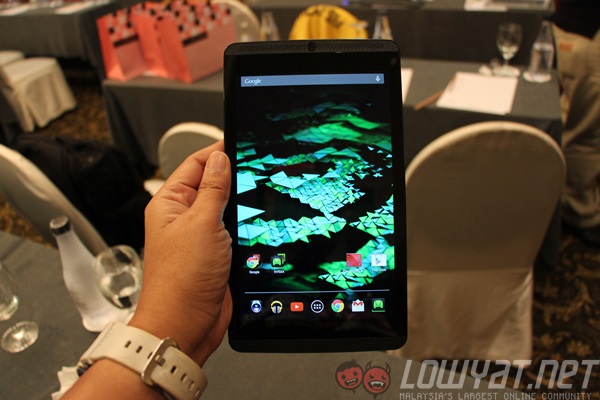
The tablet display is a 1920 x 1200 multi-touch full HD screen, which means that it is fully capable of 1080p resolution. A good sign for the PC games that are intended to be streamed to the device. However, the NVIDIA unable to render such high resolutions on its own; but that is an issue common to all handheld consoles.
Front facing speakers flank the display, giving the façade a look reminiscent of HTC’s designs. A single 5-megapixel camera sits squarely in the centre of the top of the tablet, splitting the speaker; although it isn’t given much space to itself.
The back of the Shield Tablet features a matte finish to provide for a better grip. Also visible is the slot for the stylus and rear 5-megapixel camera that sits on an offset position at the top.
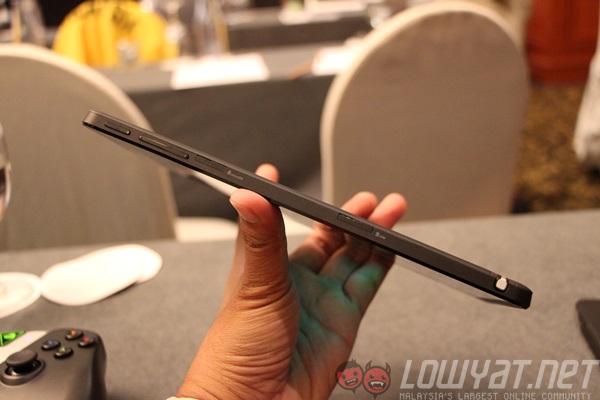
The right side of the device holds the power switch, volume controls, MicroSD and SIM slots, and stylus. It isn’t a thin tablet by any stretch of the imagination, and even has tapered sides that many other tablets use to provide the illusion of thinness.
Located along the top and bottom edges of the Shield Tablet are the bass ports. There was no time to see if they made any difference, but most mobile gamers tend to end up using earphones while playing anyway.
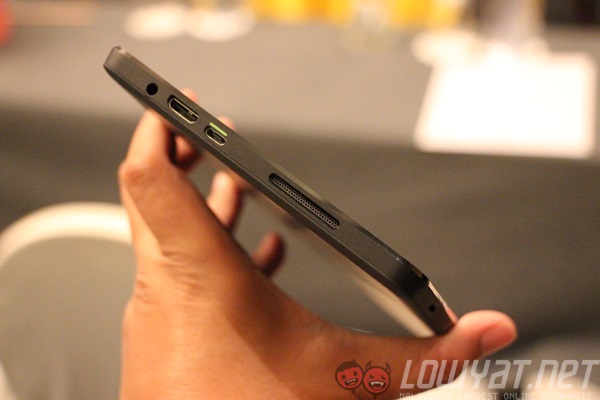
Along the top of the Shield Tablet is also the microUSB charging port, the audio jack, and mini-HDMI port. The mini-HDMI port is meant to allow the Shield Tablet to output its display to a TV, although this limits the number of available games that can be run since it cannot also simultaneously stream from a PC.
The addition of the stylus is a slight puzzle on something that is the successor to a gaming dedicated handheld console. It’s not a bad stylus by any stretch but, as before, there wasn’t much time to try it out properly. Ideally this would be taking advantage of the Tegra K1 processor for image editing, but how good it is remains to be tested.
Controller
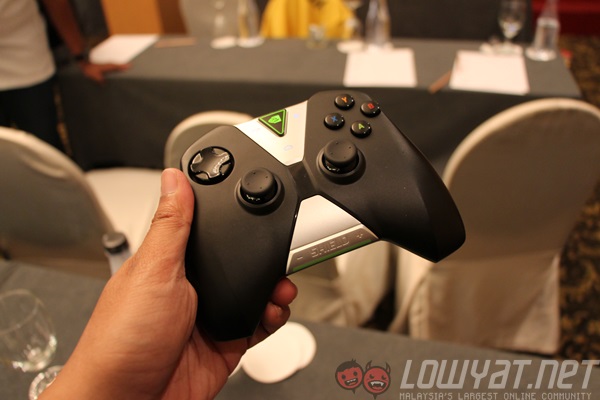
Divorced from being attached to a display, the NVIDIA Shield Tablet controller still bears some resemblance to the previous Shield. At some point it looks like a cross between the PlayStation DualShock and Xbox controllers; due to the symmetrical placement of the thumbsticks and wide grips, but still remaining thick with the extra space dedicated to the trigger buttons.
Slightly less obvious from the pictures are the dedicated Android buttons for controlling the Shield Tablet from the controller. It features the same Home, Back, and Menu buttons from most standard Android devices; although using them feels like a novelty here.
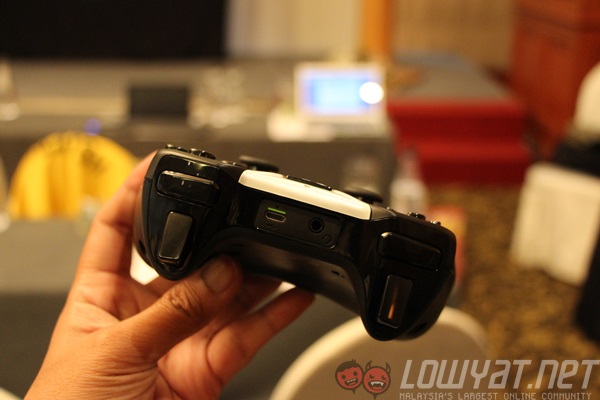
The Shield plaque at the bottom of the controller also doubles as volume controls; while the area just above it is a touchpad for navigating the tablet. There was no opportunity to try it out as the two were not paired at the time. The same goes for the built in voice controls that are achieved through the microphone built into the controller.
Conclusion
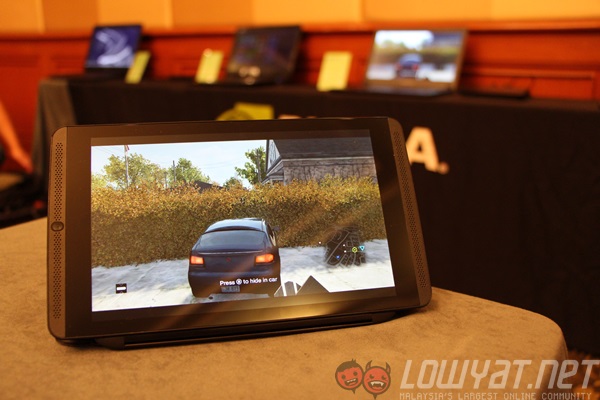
While the NVIDIA Shield Tablet and Controller are sold separately, it is quite obvious that they were meant to be used together. The Kepler-powered Tegra K1 screams for higher end games, and the controller makes it possible to play the console ports comfortably without resorting to touchscreen controls.
On its own, the tablet section is a reasonable choice and wouldn’t look out of place among the regular mainstream devices from Samsung, Sony, and Asus. The front facing speakers make this an interesting alternative media consumption device instead of the gaming slant that the NVIDIA Shield Tablet seems to be taking. If only NVIDIA would bring this into the country for us to properly mess around with.
Follow us on Instagram, Facebook, Twitter or Telegram for more updates and breaking news.


